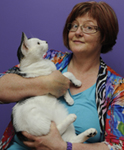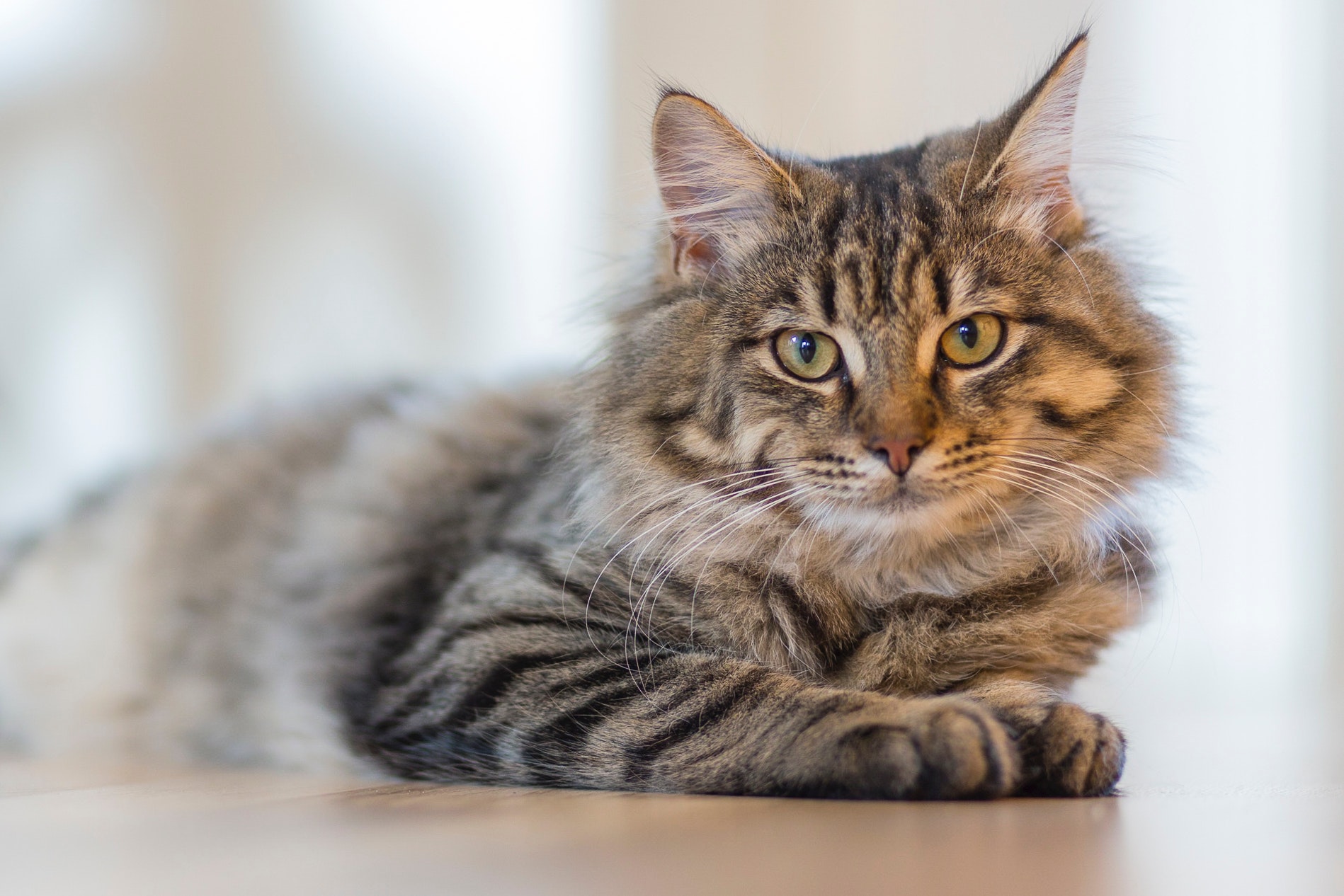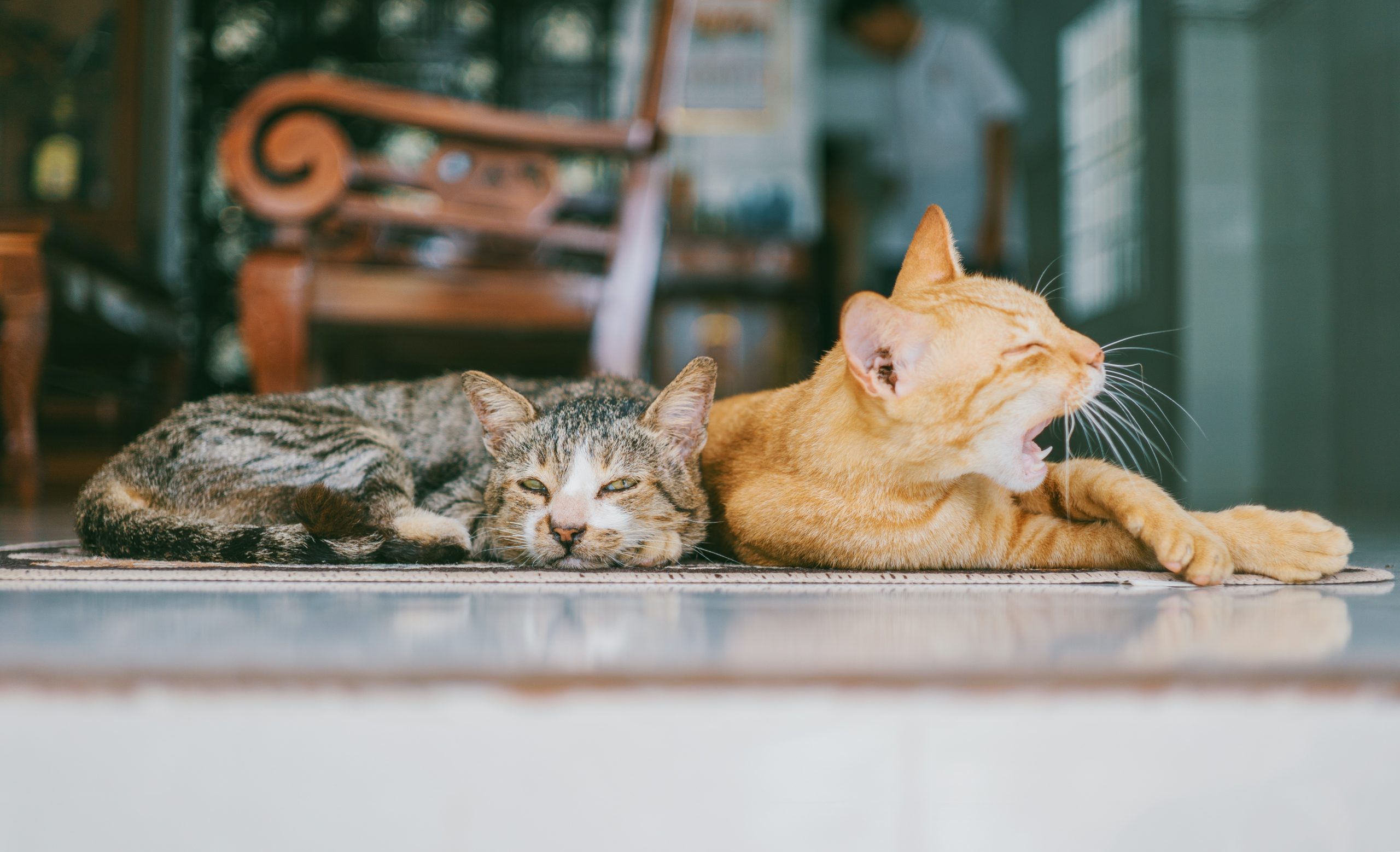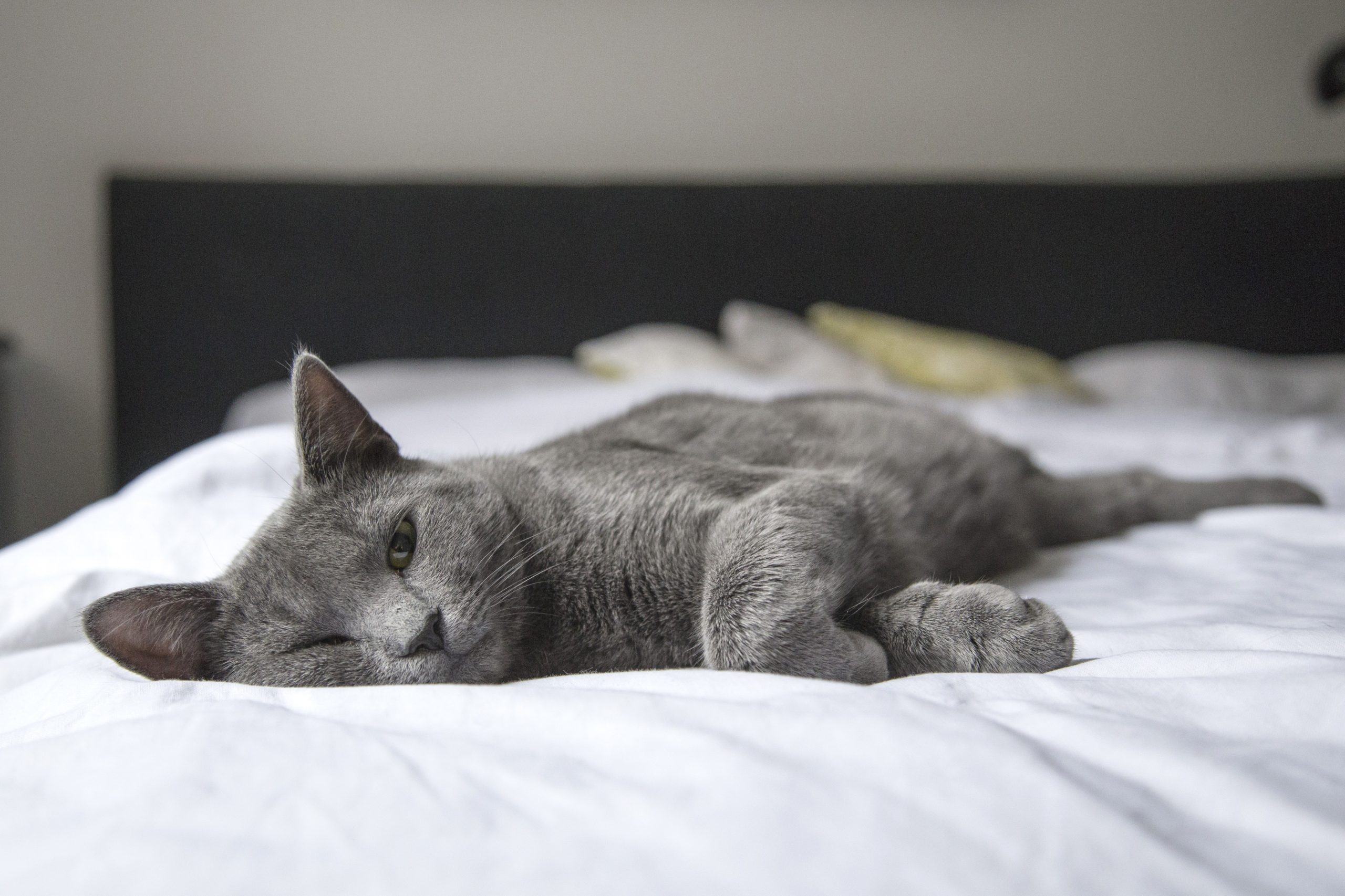Does your cat’s breath bowl you over? Cats neither brush their teeth nor chew on mice everyday anymore. So it is not surprising that poor dental hygiene and bad breath are reaching epidemic proportions in our domesticated feline friends.
Halitosis is mostly caused by unhealthy teeth and gums although it can sometimes also be caused by internal disease or even tonsillitis.
The really interesting thing, though, is that feral cats in Kakadu also have dental tartar and bad teeth at about the same rate as pampered pussycats in the urban world! And the ‘very feline’ problem of early gum disease and enamel erosion (FORL’s) has been found in the teeth of the Egyptian mummified cats – so it is a ‘cat thing’ not a ‘modern’ thing!
Cat’s teeth are a very different design to ours. Humans (and horses) grind their food, while carnivores like dogs and cats slice their meat straight from the bone. The pressures that the cutting molars (“carnassial teeth”) can reach means that the products used to repair human teeth just pop off cats’ teeth, especially as feline teeth are much smaller and more brittle than ours.
This means that even a minimum of restorative dentistry has no long term value, so prevention, as always, is the CATch cry!
There are three stages of tooth problems in cats, and they fairly neatly align with the age of the cat.
Young cats
Young cats (kittens to one year) have a tendency to contract gum disease, especially cats who come from colonies or catteries. The gum disease seems to be virus-initiated, but then perpetuated by bacteria which thrive in the ‘pockets’ formed in the gums by the viral damage. At some point, the teeth start to erode, and the lesions become painful.
Early intervention, including dental x-ray, cautery of the pockets in the gum, and possibly removal of the affected teeth, can halt the process in some cats, and certainly make your cat more comfortable. One of the best places to start is with the newer ‘plaque preventatives’ such as Plaque Off for Feline ™ and Healthy Mouth ™ which are added to food or water. This can settle the gums in up to 50% of these damaged little cats
If you have time to commit to brushing your young cat’s teeth everyday, then there is special toothpaste to help you (although over time it does not make a big difference).
Chicken wings, necks, chunky pieces of kangaroo or beef, and lamb hearts (raw, twice weekly) are also helpful, as is Hills T/D (= Tooth Diet). This is 3 to 4 pieces each day, chewed in place of some regular dried food and it keeps the teeth polished very easily. It helps the cats who do not have gum disease, but mostly is just nice to have something to chew on!
Watch that your cat uses both sides of the mouth to chew. If she doesn’t, she is telling you there is an invisible but painful problem inside her mouth. Young cats need to see the vet annually for vaccinations (up to 3 years old) so give me a call at the Cat Palace in Roseville or contact your own vet. At the same time, make sure you ask about your cat’s dental health!
Middle-aged cats
Once they reach 3 – 4 years of age, periodontitis sets in for about 85% of cats (including the Kakadu cats). At this point, removal of any damaged teeth, under anaesthetic, cleaning any remaining viable teeth, then followed by some form of maintenance (chewing as above) will keep the remaining teeth healthy for a few more years.
Often, once the cat is anaesthetized, I find that where two or more teeth are diseased, the rest are in the early stages, and she removes them as well, rather than impose a further anaesthetic on a cat within 2 – 3 years. If any of these issues resonate and you may find this case study: Why Removing Cat Teeth Will Increase Fluffy’s Health And Wellbeing of great value.
Dental pain in cats is much under diagnosed, and we have seen many cats recover from things like diabetes, general grumpiness and poor coats after their teeth are attended to!
Most cats need their teeth attended to during the middle years and I always take the opportunity to check the kidneys as well as I outline in the next section.
Older cats
Over the age of 10 years it is the cat’s metabolism and kidneys that become the main focus, and ‘saving the teeth’ becomes less critical. At this age, the bacteria in the plaque in the mouth are being filtered through the kidneys, causing low-grade damage on their way out, as well as stressing an elderly immune system. Oral bacteria is now thought to be a major contributor to the high incidence of kidney failure in old cats.
Additionally, any anaesthetic becomes a bigger risk as a drop in the blood pressure can lead to sudden renal failure and early death.
Any older cat needing dental work needs to have a general health check, always needs a urine test and possibly blood profile done, plus an I.V. drip during the procedure to maintain blood pressure. This makes an anaesthetic a ‘big deal’ for the cat as well as the owner.
So to avoid having to repeat the procedure every 6 – 12 months I always recommend that more teeth come out than stay in.
The front four (canine) teeth remain, so their face is the same, but as the bad breath and focus of infection is gone – we may be ‘buying’ an extra two years of ‘kidney time’ and lots more ‘face time’ cuddles !
Yes, cats teeth are important, and they need and deserve attention if your cat is to have a long and happy life and sweet breath!
About the Author
Dr. Kim Kendall, BVSc MANZCVS (Cat Medicine and Animal Behaviour) is one of the best known feline vets and behaviorists in Australia and the world.
 Since 1994 her dedicated cat-only veterinary, boarding and grooming centre, The Chatswood Cat Palace has been based on Sydney’s North Shore.
Since 1994 her dedicated cat-only veterinary, boarding and grooming centre, The Chatswood Cat Palace has been based on Sydney’s North Shore.
Dr. Kim has a passion for improving feline health, and wants the best emotional and physical wellbeing for all cats at home. She achieves this by incorporating real science to back up clinical judgement.
She is also a pioneering expert in the field of Feline Friendly Care at home and at the vet clinic and has written extensively on the subject.



